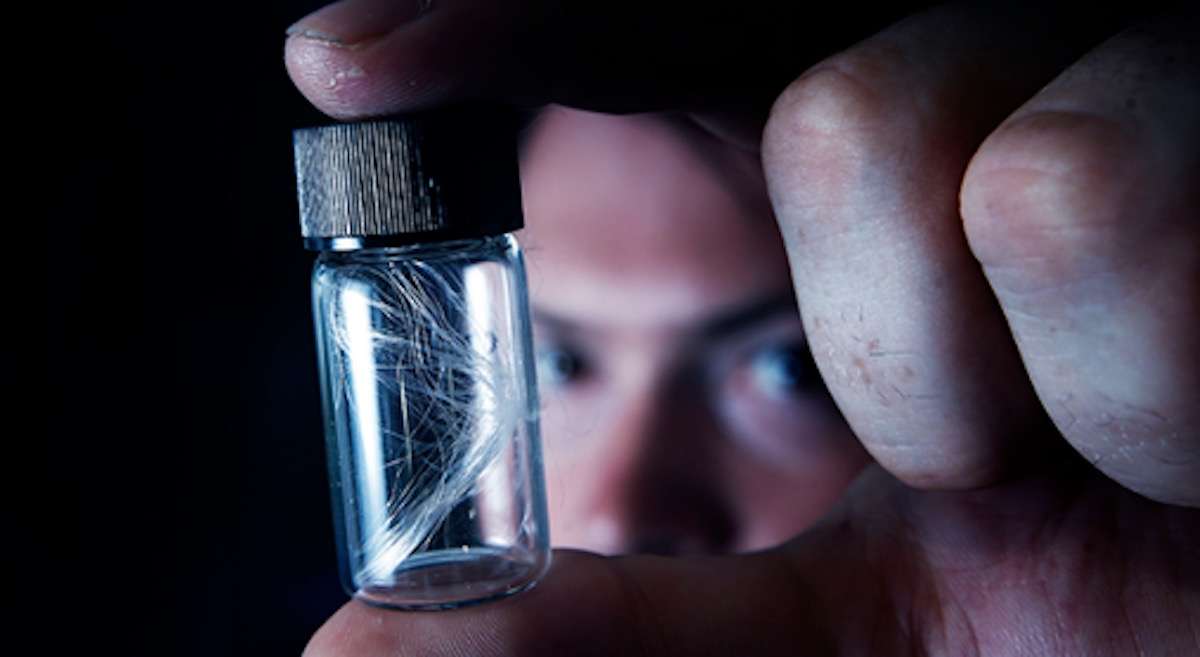Retired Wind Turbine Blades Get Turned into Bridges and Reinforced Concrete
To prevent thousands of first gen. wind turbine blades ending up in landfills, Ireland uses to make bridges, reinforce concrete, and more.

By mimicking how a spider spins silk at room temperature, an Oxford University venture has created a high performance, biodegradable textile that is 1,000 times more efficient than current methods for making man-made fabrics, which emit tons of carbon.
Over the course of millions of years, spiders have evolved the ability to create one of the world's strongest and most adaptable materials—silk.
The secret to a spider's ability to create silk lies within their spinnerets, a specialized organ that turns the liquid silk gel within the spider's abdomen into a solid thread.
After years of research into this unique mechanism, Spintex has managed to mimic the spider's amazing ability: The company has created a process to spin textile fibers from a liquid gel, at room temperature, with water and biodegradable textile fibers as the only outputs.
Last week, the nonprofit Biomimicry Institute awarded $100,000 to the English researchers, naming Spintex the winner of this year's Ray of Hope Prize, which honors the world's top nature-inspired startups.
"By learning from nature, Spintex is creating new products, materials, and processes that solve fundamental sustainability challenges," says the media release.
"The textile industry is searching for sustainable technologies and solutions that will reduce waste, greenhouse gas emissions, and pollution, and enable a circular economy. Spintex is uniquely positioned to replace not only silk used in fashion, but also oil-derived synthetic fibers. As they scale, their goal is to expand upon their textile capabilities, creating high-performance textiles with properties, such as stretch and embedded color, all while creating biodegradable and non-bioaccumulating textiles."
More than 50% of silk's environmental footprint lies in the raw material processing, which uses thousands of liters of water that must be boiled every day, so it's very energy intensive. Currently, there are no sustainable alternatives to traditional silk.
"Spintex provides the only truly sustainable option for silk production that can produce fibers with the quality, performance and luster of traditional silk," says the company website. "The room temperature processes completely remove the high-energy costs seen in the silk industry, while providing an equivalent or superior product."
"Going through the Ray of Hope program has been a fantastic experience," said Alex Greenhalgh, CEO and co-founder of Spintex. "All of us are deeply honored to be selected as the winners of the 2021 prize and are so grateful for the opportunity given to us."
Spintex told WS they currently have ongoing development projects with some big fashion and textile brands, but nothing is yet commercially available.
Besides fostering the growth of top nature-inspired startups, the Biomimicry Institute hosts a cool website called AskNature.org, which is a free online tool that contains strategies found in nature and examples of ways they're used in design.
SPIN This Yarn And Share it With Your Friends on Social Media…
Be the first to comment